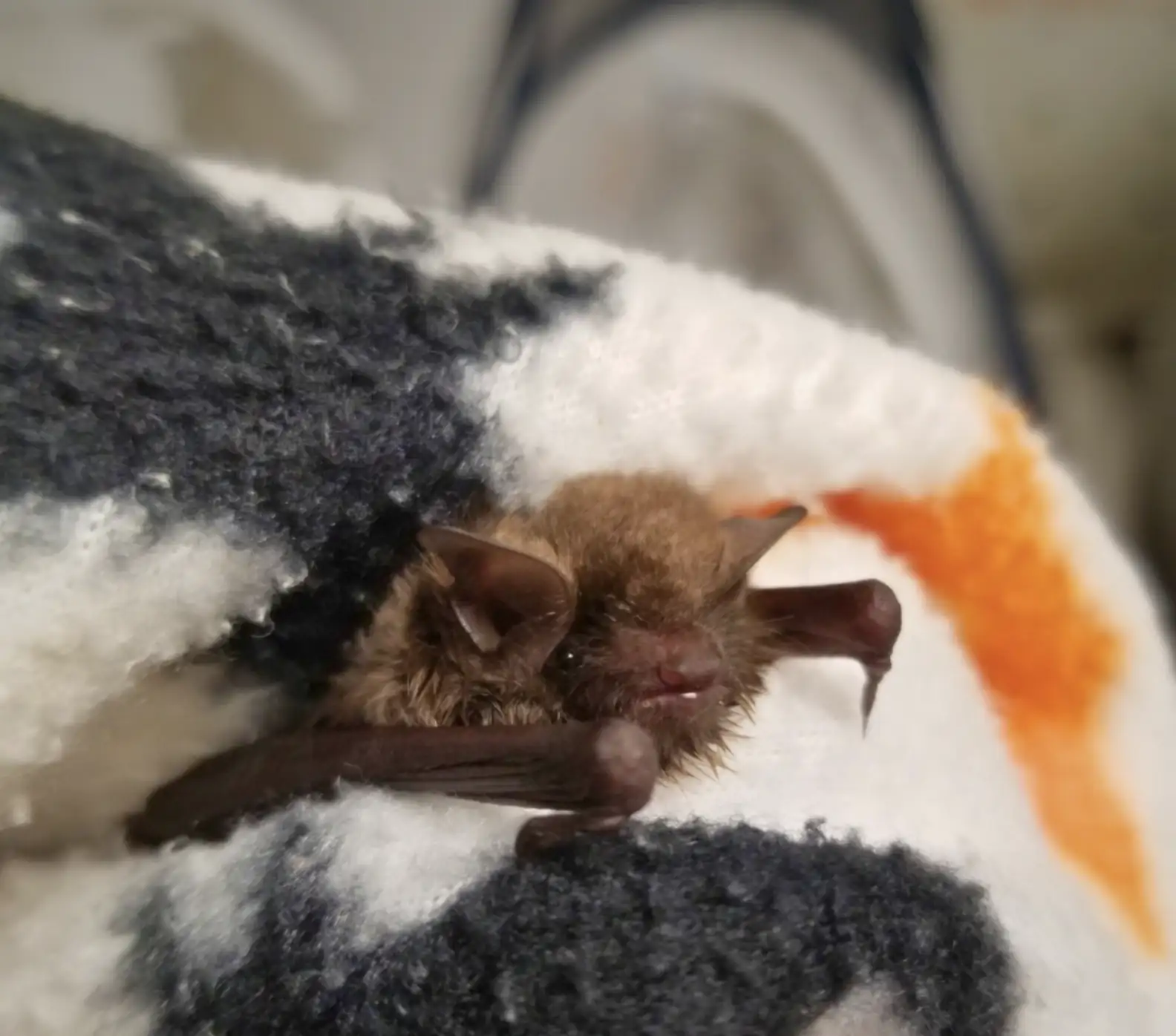She needed help.
In Kirkwood, Missouri, a resident named Eros was approaching an office building when they spotted an unusual “furry lump” on the wall. As Eros drew closer, they discovered that the lump was actually a tiny bat burying its face in the brick, completely still.
Concerned by the bat’s inactivity, Eros asked the office workers nearby if they had noticed her. They revealed that the bat hadn’t moved for at least three days, which heightened their worry. Fortunately, Eros’ partner, Elspeth Furey, is a bat rescue volunteer at the Wildlife Rescue Center (WRC). Upon hearing about the bat’s condition, Furey quickly rushed over to assist.
“I knew that wasn’t normal,” Furey told.

With care, Furey transported the bat to the WRC, using gloves to gently place the animal in a towel-lined bin with air holes for ventilation. Once the bat arrived at the center, the staff discovered she was suffering from a mite infestation, which had left her weak and lethargic. They provided her with the necessary treatment to help her recover. While caring for her, the team was curious about her species.

After consulting wildlife references and examining her distinct features, they made a surprising discovery: she was an endangered Indiana bat.
“[S]he was already special to us, but I didn’t know she would be quite so special from a conservation perspective,” Furey noted. Indiana bats, measuring only two inches long and weighing less than an ounce, inhabit parts of the Midwestern United States and some areas of the South and Northeast. Unfortunately, their populations have plummeted by 50 percent in the past decade due to threats like white-nose syndrome, pesticide exposure, climate change, and hunting.
“As worried as I was for her, it was also really exciting to see her up close,” Furey expressed.
Thanks to the dedicated efforts of the WRC, the bat quickly began to recover, alleviating Furey’s concerns. Just three days after her arrival, WRC staff released her back into her natural habitat. If anyone encounters a bat that appears unwell, it’s crucial to contact a licensed wildlife rehabilitator like the WRC. It’s important to avoid touching bats with bare hands during any rescue attempts.
The WRC team was thrilled to have helped an Indiana bat and to release her back into the wild.
“Everyone at the Wildlife Rescue Center was absolutely delighted to send this patient back to her home,” said Christina Kinnamon, a development associate at WRC. “While each release is a celebration, returning an endangered species to its natural habitat is incredibly special.”
